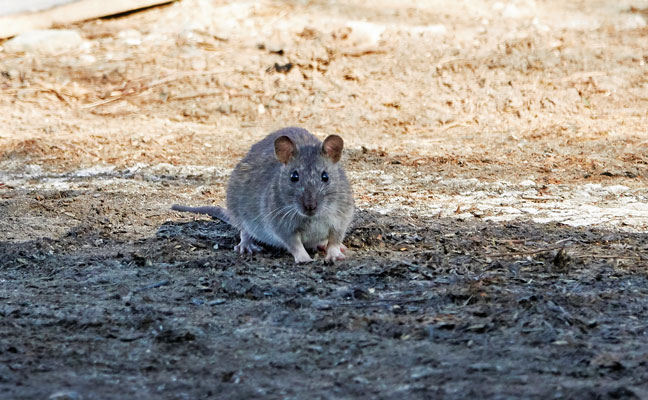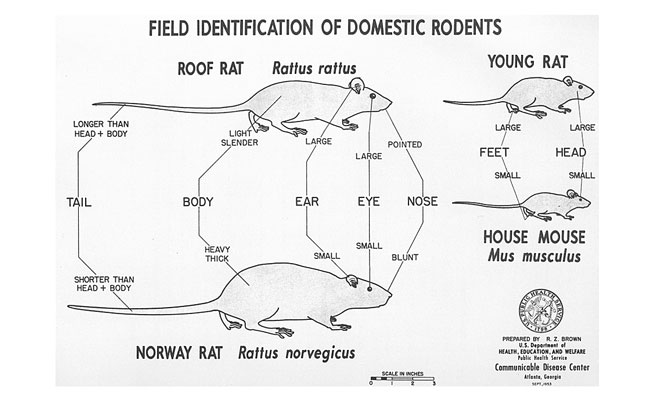
Commensal — “sharing one’s table” — rodents include the house mouse, the roof rat and the Norway rat. PHOTO: DENJA1/ISTOCK / GETTY IMAGES PLUS/GETTY IMAGES
A thorough understanding of the physical abilities of rodents is useful when designing a control program. For example, rats can swim up to a half-mile in open water, travel through sewer lines against substantial currents, and tread water for up to three days.
Roof rats (Rattus rattus) and house mice (Mus musculus) are excellent climbers. Norway rats (R. norvegicus) are slightly less agile at climbing, but can jump. From a standing position, both rat species can jump vertically up to 3 feet. They can drop from 50-foot heights without injury.
If rodents can’t get around an object, they go through it. They are capable of gnawing through a variety of materials, including lead sheathing, cinderblock, aluminum siding, glass and improperly cured concrete. Rodents also can squeeze through small openings: 0.5 inch for rats and 0.25 inch for mice.
THE FIVE SENSES

The relative length of the tail and body should be considered first when attempting to identify an adult commensal rodent. The relative size of the ears compared to the size of the body is a distinctive characteristic that usually can be observed without much difficulty. The other characteristics tend to be somewhat subtler, and should be used with caution. To distinguish between young rats and adult mice, the relative size of the feet and the rest of the body is generally a distinct and easily recognizable characteristic. IMAGE: Truman’s Scientific Guide to Pest Management Operations, Seventh Edition
SIGHT: Rats and mice cannot see beyond about 4 feet, but they can sense motion up to 50 feet away. They are mostly colorblind, but can detect light-colored or reflective objects. They are most active at night when light levels are low, at which time they rely less on their eyesight than on their other senses.
TASTE: Rodents have a highly developed sense of taste, which allows them to detect some chemicals at parts-per-million concentrations. This is why it’s so important to store rodent bait away from other materials, and to not use tobacco products right before handling rodent control materials.
SMELL: Odor is one of the rodent’s most important senses. They mark objects and pathways with urine or glandular secretions, so they can find ways to food and potential mates. Their sense of smell also helps differentiate among members of their colonies and strangers, and to tell whether a stranger is a strong or weak individual.
HEARING: Rodents use hearing to locate objects to within a few inches. Rats and mice have a frequency range of 50 kilohertz or more; by comparison, humans have a range of about 20 kilohertz.
TOUCH: Rodents use their vibrissae, or sensitive body hairs and whiskers, to explore their environment. A rodent in a familiar area relies heavily on its senses of touch and smell to direct it through time-tested movements learned by exploration and knowledge of its home range. Rodents prefer a stationary object on at least one side of them as they travel, which is why they prefer to move along walls. In captivity, a rodent will hide quite contentedly in a clear glass jar because it feels enclosed and secure.
Source: Truman’s Scientific Guide to Pest Management Operations, Seventh Edition, p. 416. It is available for purchase at the PMP Bookstore.
Leave A Comment